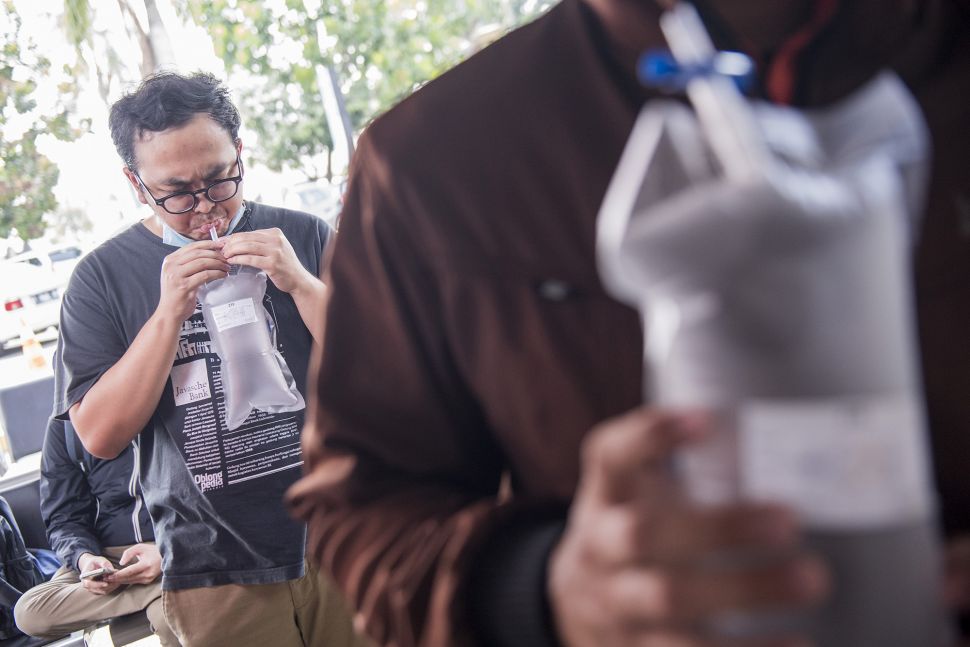Tulisan saya di The Jakarta Post
=======================
Ahmad Fuady, Rotterdam, the Netherlands | Opinion | Thu, January 31 2013, 10:03 AM
Paper Edition | Page: 6
Late in December 2012, President Susilo Bambang Yudhoyono signed a new government regulation on tobacco. It was a surprise, considering the desperately long struggle to try to control or curtail tobacco use.
A critical question, however, should be raised as to whether the regulation serves as a precursor for upcoming policies, or simply a win-win solution to satisfy the anti-tobacco activists. In fact, the government has proposed that the House of Representatives ratify the Framework Convention on Tobacco Control (FCTC).
However, is the ratification of the FCTC still relevant while the government has already taken measures to fulfill the goals of the international convention?
In principle, the FCTC has six basic strategies in a multipronged approach to control tobacco, comprising the monitoring of tobacco use; protecting people from tobacco smoke; offering help to smokers to quit the habit; warning about the dangers of tobacco; enforcing the ban on tobacco advertising, promotion and sponsorship; and raising taxation on tobacco.
The Finance Ministry is raising tax on tobacco products by approximately 8.5 percent in 2013 and the new government regulation on tobacco use covers three out of the six FCTC strategies.
These two measures deserve praise. However, the government faces challenges in developing ongoing strategies to reduce the number of cigarette smokers, now that Indonesians account for 4.8 percent of the world’s smoking population, the third-largest after China (28 percent) and India (11 percent).
The latest study conducted by Wilson (2013) indicates that mass media reports and warnings on cigarette packets have the biggest potential impact on cigarette smoking cessation and the least potential effect on initiation. The new regulation states this strategy explicitly in articles 17-20.
It may be a triumph for anti-tobacco activists. They may be also satisfied since the regulation develops a legal basis to enforce advertising bans, restrict machine-packaged cigarette production and control the promotion of cigarettes. However, Mendez’ (2013) study estimates only a small decline of cigarette consumption of less than 2 percent within 10 years via these strategies — and then, only if the government is capable of turning the strategy into specific, measurable programs. Otherwise, the drop in the number of smokers may be even smaller.
Look at the prognosis for cigarette consumption, which affords the tobacco companies to be unconcerned about failure. Despite the expected decline in cigarette consumption, Indonesia will remain a large market that will help the tobacco industry survive.
The market behavior of cigarette sales in Indonesia is also unique. The latest regulation limits the number of machine-packaged cigarettes in one packet to no less than 20 cigarettes to reduce the number of smokers from the lowest-income brackets. This seems to be a remarkably promising point, but who is capable of ensuring that every small-scale cigarette vendor complies with this ruling?
Smokers’ behavior is also peculiar. Even though the majority of smokers are in the low-income bracket, they seek every avenue to smoke regardless of the price. Increasing tax on cigarettes does not tend to affect the number of smokers.
The 8.5 percent tax increase will result in a price rise of only Rp 5 – Rp 20 per cigarette. So, let’s make a calculation. If a low-income smoker smokes five cigarettes per day, he smokes 150 cigarettes per month. If the price increase reaches Rp 20 per cigarette, his spending on cigarettes will only amount to an extra Rp 3000 (31 US cents) per month. What a piece of cake.
So, who should be satisfied with the new regulation?
Even if the price of cigarettes was increased by 100 percent, the study said, cigarette consumption would only decrease by a maximum of 6.5 percent within 10 years. However, it is difficult for the government to take the risk of making such a drastic decision as it would spark a complicated dispute with the tobacco industry. Tax revenues from the industry would diminish as an increasing number of smokers decided to curtail or quit their habit.
Since many studies have revealed that daily cigarette consumption is not related to income, higher taxation may only burden low-income smokers. Considering the price elasticity of cigarette consumers’ prevalence, the government should be more willing to raise cigarette taxation to at least 10 percent rather 8.5 percent.
Since the tobacco industry may not experience decreased sales through marketing restrictions, the regulation on tobacco consumption seems to deliver false expectations regarding the diminishing number of smokers. It remains a challenge to make the dream of anti-smoking activists, namely to decrease the negative impact of smoking, come true. They must remain critical, not complacent, and undertake even more efforts than before.
The next challenge is to oversee the implementation of the new regulation with measurable programs. A major shortcoming of anti-smoking activists is their lack of research, which will be sorely needed to provide measures to rein in tobacco consumption.
The writer, who lectures at the department of community medicine at the University of Indonesia (UI), is studying health economics, policy and law at Erasmus University in Rotterdam, the Netherlands.
Tulisan asli ada di http://www.thejakartapost.com/news/2013/01/31/the-new-tobacco-regulation-who-satisfied.html









